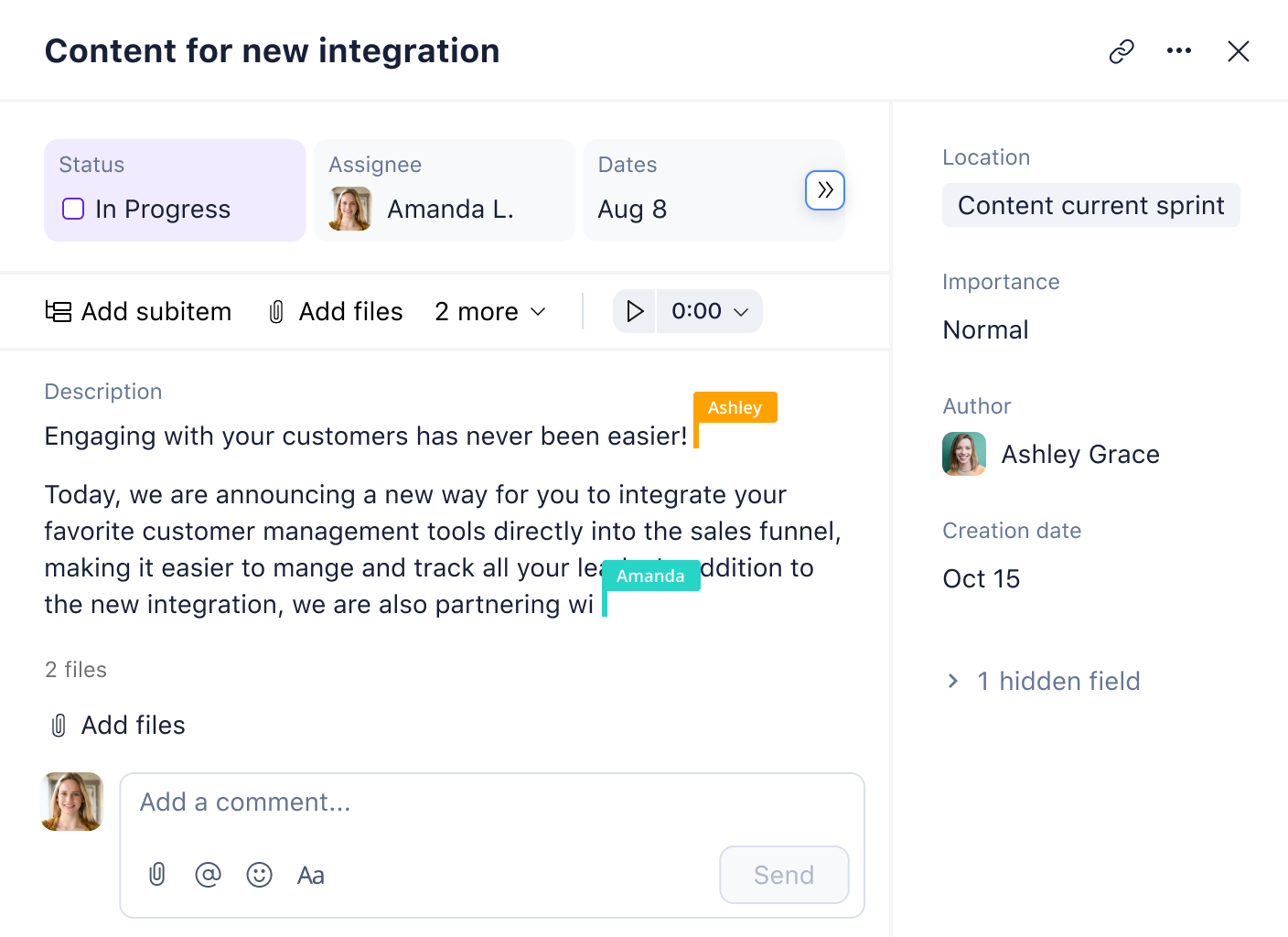The exciting process of constructing your own home is about a six-month-long endeavor. It begins with the setup of your base, where concrete is poured onto your chosen building site to create a foundation. Once it dries, the doors, windows, walls, and flooring can be installed. You will notice a visible ’skeleton’ come into shape, which is essentially your house’s framework. All you need to do now is customize your interior and exterior and add the finishing touches. You and your family will be move-in ready in no time!
In business, you can also benefit from a solid framework. The maturity model framework in particular is a highly important tool that businesses should recognize and apply. Arguably the foundation for long-term success, this framework is a great way for your company to analyze and track its progress in various areas. Using the results, you can begin designing a personalized roadmap to continuously improve your organization.
In this article, we will explore how to implement a maturity model framework, measure progress, overcome challenges, and how to approach future trends.
What is the maturity model framework?
Think of the maturity model framework as a house held up by four sturdy walls. Each wall represents a key component that your business can use to see where your areas for improvement lie and what maturity level you are on.
Let’s take a closer look at each of these elements:
Processes
Processes are the backbone of any organization. They define how work is done and, if done right, can help minimize errors, reduce costs, and improve customer satisfaction.
- Project management methodologies, such as Agile and Scrum, are approaches that businesses use to plan and execute their projects. If you complete an assignment on time and end up with happy customers and investors, you can be sure to thank your project management method of choice!
- Quality assurance procedures, which involve setting standards to prevent the quality failures of your product or service, ensure that what you sell to clients works properly and carries out its intended purpose. For example, if you sell walking frames for the elderly and are getting reports that they broke within a year of purchase, your quality assurance methods were not very effective.
People
Your people determine whether or not your company succeeds. They should be skilled, competent workers who use career development opportunities to make them even better at their jobs.
- Your organization should have all staff participate in training and development programs that boost their skills and further their industry knowledge. While this helps older workers stay up to date on what’s abuzz, it will also assist younger employees in learning the ropes of the company culture.
- Your organization must also prioritize the engagement and satisfaction of all employees. Emphasize that your door is always open for a quick chit-chat if they have something on their mind. Don’t be afraid to plan company meals and social events outside of work for some relaxed bonding.

Technology
Technology refers to the tools and systems your business uses. It allows you to effectively create and deliver your products and services.
- Choose technology that will automate processes and streamline operations. Switching from paper-based to electronic IT service requests can speed up the time it takes to fix that broken laptop, while cloud computing platforms like Azure provide access and storage for important documents all in one place.
- Regularly assess technology infrastructure and upgrade or switch them out for a better solution as needed. For instance, customer relationship management (CRM) systems are a neat software solution to track all customer interactions and manage customer data.
Culture
Culture represents the values, attitudes, and behaviors that shape your organization’s collective mindset and approach to work.
- Having a positive and supportive culture leads to happier staff who perform better and are less likely to quit. If your employees are grumbling over pay and working conditions, it may not be long before they jump ship, perhaps to a competitor!
- Building a strong culture requires respectable and consistent leadership. Be sure to emphasize communication and reward individual and team achievements.
How to implement a maturity model
Putting the maturity model into place is definitely not something you do in a haphazard way. Follow these steps for successful implementation:
1. Identify business needs
Take a second to think of your business as several different parts that make up a whole. Which department or team is having a bit of trouble carrying its own weight?
Perhaps your project management team needs to distribute resources more effectively or not be too lenient on employees who miss crucial deadlines. Maybe your customer service agents could work on reducing their response time and use self-service options to keep clients happy.
2. Set maturity levels
Once you figure out where your business needs lie, it’s time to set maturity levels. Be sure to use industry standards and best practices to establish these levels.
- Project management example: Maturity levels could range from ad-hoc practices to fully optimized and standardized methodologies. At the ad-hoc level, project management may be informal and inconsistent, with little documentation or formal processes. As your company becomes more ’mature,’ you may begin using frameworks like Agile or Six Sigma. You may also incorporate standardized project templates and workflows, a testament to your growth over time.
- Customer service example: You may start with reactive and transactional customer support and later progress to more proactive and personalized customer experiences. In general, businesses begin by spending all their energy on resolving customer issues as they arise. As they climb the maturity ladder, they may choose to invest in CRM systems and customer feedback mechanisms.
3. Develop a roadmap for maturity
Now that you’ve set your maturity levels, your company must create a roadmap for maturity improvement. This means outlining the specific actions and initiatives required to move from one maturity level to another. You need to be specific and include key milestones and timelines so that everybody is on the same page.
- Project management roadmap example: Be sure to conduct a thorough assessment of current project management practices, identify gaps and areas for improvement, and implement training programs to boost project management skills. You can begin using project management software tools and project management offices (PMOs) as well.
- Customer service roadmap example: Give out customer satisfaction surveys, analyze feedback data, and flag areas for improvement. Try to revamp your customer service training programs and use customer service metrics and KPIs to track performance.
How to measure your progress
Establishing key performance indicators and regularly monitoring and evaluating them afterward are great ways to see if your business is headed in the right direction.
When establishing KPIs, choose metrics that are measurable, specific, and relevant to the chosen domain. For example, several appropriate KPIs for the customer service domain are:
- Customer satisfaction scores: Provide stellar service to clients and contribute to an awesome customer service experience. You can measure and analyze these scores to see what your customers tend to be happy (and frustrated) about.
- Response time to customer queries: Respond quickly and efficiently to your customers so as to not keep them hanging. You can use your customer satisfaction rates to see if your clients feel that your products and services are worth their time.
- Employee training completion rates: Properly train your employees so that they can give excellent customer service. You can review these rates to see if your staff has the knowledge and skills necessary to address clients, as they can be difficult at times.
Once you decide on your KPIs, you need to track and evaluate them. Do so by creating a system for collecting all data and feedback.
- Gather information through surveys, interviews, and performance evaluations. You need data from multiple sources to see where your strengths and weaknesses lie.
- Hold regular evaluation sessions to analyze data, flag trends, and discuss strategies to get better. Include your stakeholders since they have a vested interest in your company.
How to overcome challenges during implementation
Dealing with resistance to change from the staff and maintaining consistency when implementing the maturity model are two big issues that companies often face. Let’s go over some solutions to get past these obstacles:
Address resistance to change
Out with the old, in with the new! When you march in and tell everybody that you are going to be implementing a maturity model, some big changes to existing processes and systems will be taking place. Although resistance to these changes is natural, it can also hinder your progress.
- Create a culture of change by allowing employees to freely share their concerns. Hold regular team meetings and address any misconceptions about the implementation.
- Offer thorough training workshops that cover both the technical aspects of the model and the underlying principles. Be your company’s support person via mentoring and coaching to lessen your staff’s concerns.
- Emphasize the benefits of the maturity model to gain support. Share success stories and point to real-life applications that clearly demonstrate how this model boosts efficiency and your business’s overall performance.
Maintain consistent application
Practice makes permanent! Whatever you do, do it right and with consistency. Consistency means that each department or team should apply the maturity model in the same manner to allow for an accurate assessment and comparison across the organization. If everybody branches off and does things their own way, this defeats the purpose of implementation.
- Correctly document how to implement the maturity model so that everybody is clear on the instructions. Include step-by-step guidelines, examples, and best practices. Remember, this is your company’s first time trying this, so it helps to have guidance on what to do and not do.
- Train all staff on how to use the model properly. Every once in a while, you should offer refresher training sessions to remind employees of why this process demands consistency.
- Hold regular reviews and assessments to analyze how you’re doing. Are there any deviations or inconsistencies? Is there a way to improve the effectiveness and relevance of the model in the future?
Future trends at work
As technology continues to advance, the opportunity to improve and refine your maturity model framework arises. For instance, your organization can use technology to automate processes, collect data, and generate insights that drive maturity model assessments. You can also integrate artificial intelligence, machine learning, and data analytics in your models to boost accuracy and better predict the future.
With the world becoming more globalized, maturity models are being adapted to adjust to different cultures and regulations. Since people and nations often act according to their environment and beliefs, companies are now taking the time to align with the local customs and business etiquette. Now that they are starting to gain a foothold in the places they previously had no presence, organizations must toe the line between being respectful and condescending. Despite it being a tall order, successfully carrying out this approach can win over international stakeholders and secure your place in the global marketplace.

Use Wrike to track progress efficiently
The maturity model framework is the key to assessing, benchmarking, and improving your business. Once you determine where your weaknesses lie, you can set goals to improve and see how you’re doing over time.
With Wrike, you can implement this framework to monitor your progress, manage your tasks, and streamline your workflows effectively.
Wrike offers several productivity-focused features. These include:
- Dashboards to access data and view your results
- Gantt charts to monitor event timelines and key milestones
- Time tracking features to log hours and improve project forecasting
Ready to track your progress and boost your business efficiency? Start your free trial of Wrike today.
Note: This article was created with the assistance of an AI engine. It has been reviewed and revised by our team of experts to ensure accuracy and quality.






